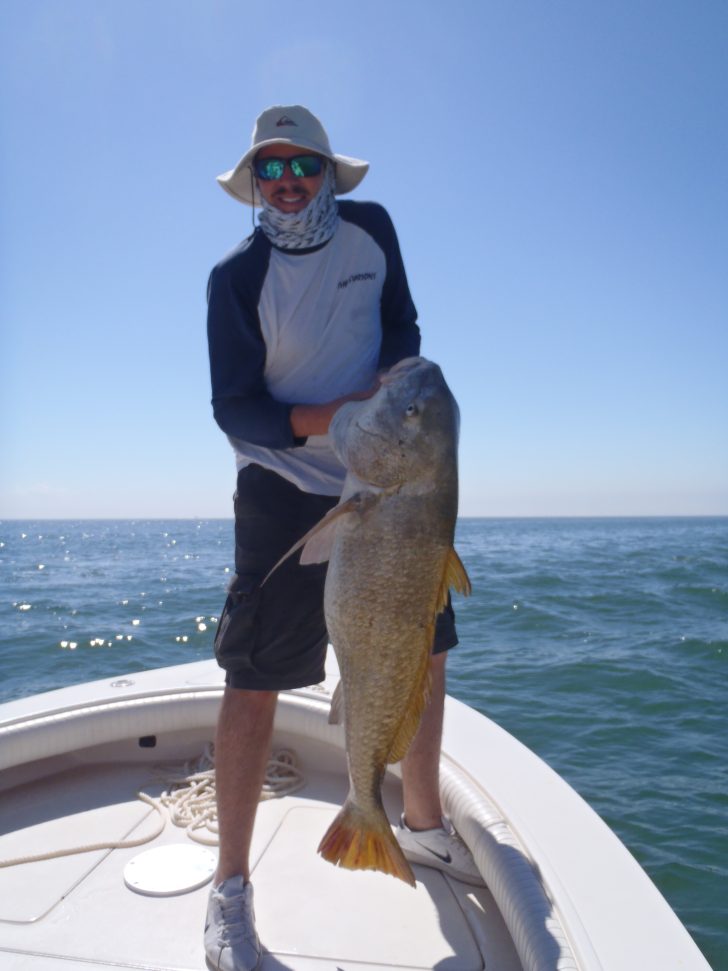Beat the Heat and Catch the Fish.
August is one of the hottest months of the year. The good part is less traffic on the water, which gives you more room to work on the mangroves and bridges. Here are some ideas on how to make August fishable. First start early and quit early, or try fishing at night.
Bridges are your friend this time of year, giving you cover from the sun and thunderstorms during the day and nighttime. The bridge lights bring the night critters out to eat like tarpon, redfish, mangrove snapper, snook and big speckled trout. If you want to catch some big boys, try bottom fishing with cut blue crabs and heavy spinning tackle with a 1 to 2-ounce sinker and a 3/0 Kahle circle hook. Catching black drum that call the bridges their home during the summer months is a blast and, after you get a few of them on the hook, you are worn out in no time. The morning bite starts from daybreak to 10 am with mangrove snapper, snook, trout, jacks, black drum and mackerel. The evening bite is about an hour before sunset. The darker the night, the better the bite as the lights from the bridge bring the baitfish and shrimp to the surface. If your boat has underwater lights use them, they draw bait fish under the boat which bring the big trout to feed.
Flats are best fished early before water temperatures get too high. Once the sun gets up, around 10 or 11 am, the flats tend to warm up to the point where the fish would rather sit than chase bait fish around for food. My favorite technique in August is using cut bait on the bottom and letting the big girls rooming the flats for food take my meal. Top on my list is ladyfish, threadfin sardines and pinfish in that order. Use a 2/0 or 3/0 Kahale hook with a #4 split shot just above the hook. Put multiple rods out spaced about 10 to 15 feet apart and let it soak. Sooner or later, that big redfish or snook will take it. The bad side is that you will catch rays and catfish, but it’s well worth it.
Mangrove snapper bite is starting to peak and some of the bigger ones can be found on many of the artificial reefs, bridge pilings and rock piles in Tampa Bay. Use an extra-long leader of 20-pound fluorocarbon with either a #1 or 1/0 circle hook. Rig a glow bead between the hook and the leader and the lightest sinker you can get away with to keep the bait on the bottom. Small greenback sardines, live shrimp, sandfleas or fiddler crabs all work well. The bites are going to take place about an hour before the change of tide.

